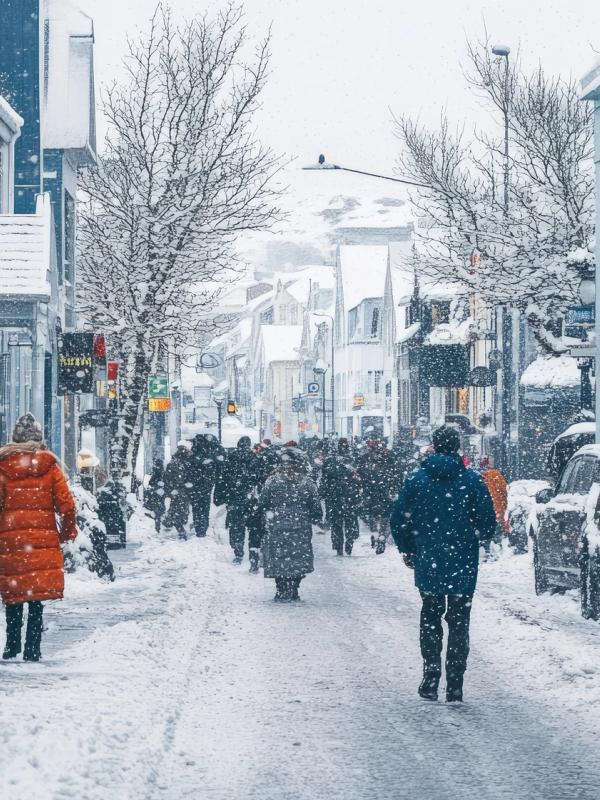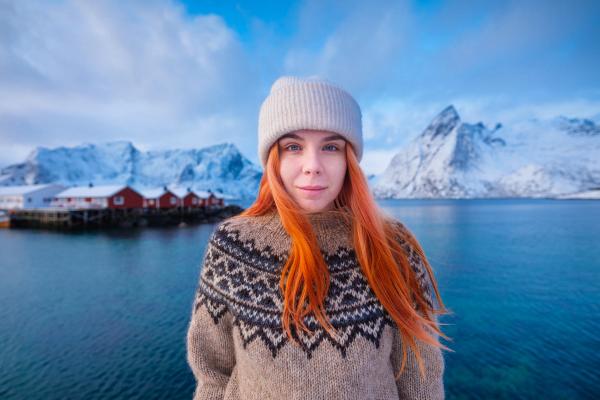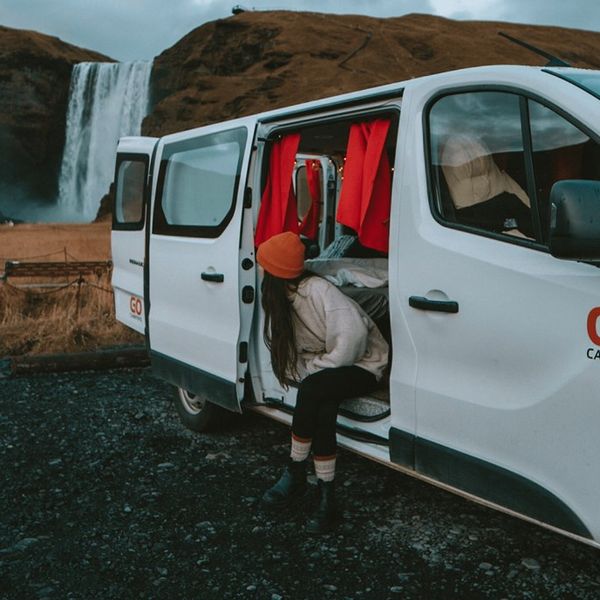
The Population of Iceland: A Small but Interesting Society
Iceland is a land of contrasts—volcanoes, glaciers, and a small but unique population. With just under 400,000 people, it’s one of Europe’s smallest countries. But its population story is full of surprises, from Viking roots to the surprising diversity we find today.
Let’s explore the numbers, diversity, and history that make Iceland unique—and discover why it’s ideal for a campervan adventure while we are at it.
Key Takeaways
- Iceland has under 400,000 people, mainly from Viking roots, but now over 20% come from places like Poland and Lithuania.
- It has only four people per square kilometer and most living in towns like Reykjavík,
- The average age is 36, with a fertility rate of 1.5 (more than most European countries, but not enough to grow)
Iceland’s Population Overview
Iceland has about 397,000 people as of early 2025. That’s smaller than many cities, but it’s spread across an island almost as big as England. That means Iceland has just four people per square kilometer—perfect for travelers who want space to explore places like the Golden Circle or Vík’s black sand beaches.
But here’s the thing: nearly everyone lives in towns or cities. In fact, 99% of Icelanders reside in urban areas, and 64% are in the Reykjavík region. So, when you begin your camper van trip in Reykjavík, you’re right in the heart of Icelandic life.
Out of the 51 countries comprising Europe, Iceland is the 46th least populated, with Russia being the most populated with almost 144 millions.
Fun Fact: Iceland’s population is smaller than Honolulu, Hawaii. It’s like a big, friendly neighborhood!

Iceland’s Racial Composition
For a long time, Iceland was primarily populated by people of Norse and Celtic backgrounds. These were the Viking settlers who arrived in the 9th century. At that time, nearly everyone—close to 100%—came from those roots. Studies indicate that most Icelandic men have Norse ancestry, while many women trace their lineage to Celtic origins, likely brought over from places like Ireland by the Vikings. Until the 1990s, Iceland remained quite similar—less than 5% had foreign backgrounds. Everyone could pretty much trace their family heritage back to those early days. Today, about 80% of Icelanders—around 317,000 out of 397,000—still have that Norse-Celtic mix.
But things are different now. Since the 1990s, more people have moved to Iceland, and it’s getting much more diverse.
How It Changed
In 1994, Iceland joined the European Economic Area (EEA), and in 2001, it signed up for the Schengen Agreement. This made it easier for people to come live and work here. Back in the 1990s, only about 4-5% of the population was foreign-born or had foreign parents. By 2022, that number surged to 23.7%, according to Statistics Iceland. That’s about 94,000 people out of 397,000 today with some foreign background. It’s a significant change, and it’s still happening.
Iceland’s Immigration Statistics
Here’s where the new people are from, along with some numbers to give you the picture:
- Poles: The biggest group, making up 5-6% of everyone. That’s around 20,000 to 24,000 people. They’re a huge part of Iceland now, working in jobs like construction and fishing.
- Lithuanians: Next, they make up about 2-3% of the population, which is roughly between 8,000 and 12,000 people. They also came for work, and you’ll see them around quite a bit.
- Other Europeans: People from Latvia, Estonia, and Scandinavian countries contribute to the mix. They may account for another 5-7% combined, approximately 20,000 to 28,000 individuals.
- Outside Europe: Smaller groups from the Philippines, Thailand, and some African countries are here too. Each is less than 1%—probably under 4,000 people—but they’re growing, especially in cities.
This pushes the percentage of the population with a foreign background past 20%, climbing every year.

What’s It Like Now?
This mix is transforming Iceland, particularly in Reykjavík. You can find Polish bakeries selling stuff like rye bread and pastries—locals love them, and you will too. There are also international festivals where you might hear Polish music, see Thai celebrations, or check out art from various cultures. Even in smaller towns, you’ll notice new businesses run by immigrants or little events that bring everyone together. It’s all contributing something fresh to Iceland’s historic Viking vibe.
Travel Tip: Check out cultural festivals and food markets in Iceland’s cities. They’re a fun way to see the “new” Iceland while still enjoying its Viking past.
Gender Proportion in Iceland
Here’s something surprising: Iceland has slightly more men than women. There are approximately 1.06 men for every woman, with 196,552 men and 187,015 women in 2024. This contrasts with many countries, where there are more women because they tend to live longer.
Why are there more men? It’s mainly because more guys have relocated to Iceland for work, like construction and tourism. But don’t worry—Iceland welcomes everyone, whether you’re traveling solo or with friends.

Iceland’s Age Composition
Iceland has a young population, with an average age of 36.2 years, making it nearly 10 years younger than the European average of 43 years. Here’s the age breakdown:
- 19.2% are under 14
- 62.7% are 15 to 64
- 18.1% are 65 or older
This youthful energy is perfect for a country rich in outdoor adventures, such as hiking and chasing the Northern Lights. Data may differ by source, but European official sources report Iceland’s fertility rate at 1.5 births per woman. This rate is higher than most European countries (the only European territory exceeding 2 is Monaco) yet remains below the 2.1 needed to see growth. Immigration keeps the population growth.
Campervan fact: With a young crowd, there’s always something fun—like music festivals or sports. A campervan lets you join in, whether in Reykjavík or nature.

Iceland’s Population History
Iceland’s population has a fascinating past. Here’s a quick look:
- 9th Century: Vikings settle, and the population grows to 30,000-80,000.
- 1703: The first census counts 50,358 people.
- 19th Century: Tough times push 20% of Icelanders to move to North America, especially Canada.
- 20th Century: It bounces back to 280,000 by 2000.
- 1990s to Now: Iceland joins European groups, bringing more immigrants. Now, over 20% have foreign backgrounds.
This mix of old and new is what you’ll see today—ancient traditions and modern life side by side.

Why Iceland’s Population Makes It Great for Camper Vans
So, what does this mean for your trip? Iceland’s small population and vast landscapes make it unique:
- Fewer Crowds: Even popular spots feel quiet.
- Friendly Communities: Icelanders are welcoming—you’ll feel at home.
- New Cultures: Diversity brings fun festivals and food.
- Adventure Everywhere: A young, active population means there’s always something to do.
Conclusion
In conclusion, Iceland’s population of under 400,000 consists of a blend of old Viking roots and new diversity, making it an intriguing destination. Over 20% of the population now has foreign backgrounds, which has opened the door to things like Polish bakeries in Reykjavík or Thai festivals in smaller towns. With plenty of open space, a young crowd, and friendly people, it’s ideal for a camper van trip along the Ring Road or elsewhere.

